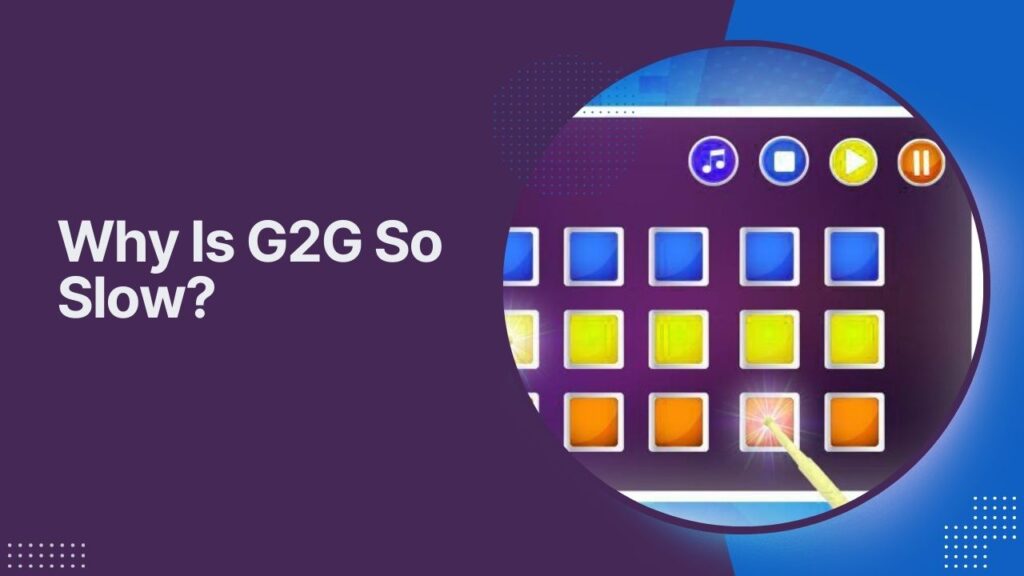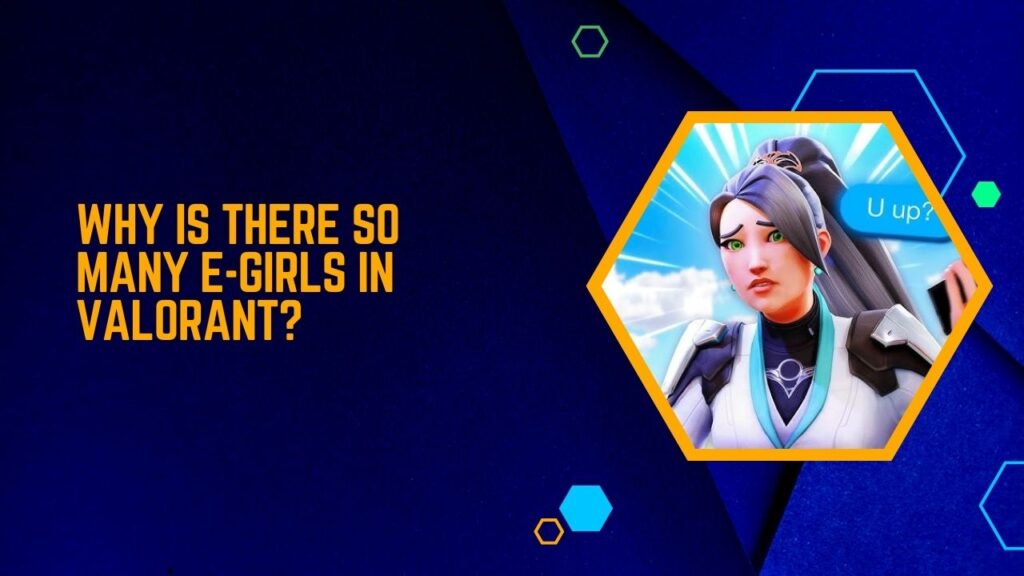Why Is G2G So Slow? G2G (Gray-to-Gray) response times can be slow due to factors like panel technology limitations and inadequate overdrive settings, which impact the speed at which the pixels change.
When shopping for a new display, you’ve likely come across the term “G2G response time” (Gray-to-Gray).
You may have seen it listed alongside other features such as refresh rate and resolution, but what does it really mean? More importantly, why does it sometimes feel like G2G response times are slower than expected?
This post explores why G2G can be slow and what factors contribute to this issue. We’ll dive deep into the science behind G2G response times, how it affects your visual experience, and offer practical advice on how you can optimize or mitigate the problem.
What Is G2G Response Time?
To begin understanding why G2G response times might be slow, it’s essential to first grasp what it means. [Why Is G2G So Slow?]
Definition of G2G Response Time
G2G response time refers to the time it takes for a pixel on your display to transition from one shade of gray to another.
It is a key metric for understanding how quickly a monitor or screen can change the color of a pixel and is especially crucial for fast-moving images.
In displays that are used for gaming, video editing, or any dynamic content, G2G response time can significantly impact the visual experience.
While most display manufacturers often emphasize metrics like refresh rate, G2G is just as important for overall performance.
This is because the faster a pixel can transition, the less blur and ghosting you will see in fast-moving images. [Why Is G2G So Slow?]
Slower G2G times can cause unwanted artifacts, such as motion blur or “ghosting,” where images linger on screen.
Why It Matters
G2G response time is particularly important for fast-paced activities like gaming. If you’re playing a competitive game or watching a high-action scene, slow G2G response times can distort the clarity of the image, resulting in a less immersive experience.
For creatives, slow G2G can affect video editing, animation, and color-sensitive work where accurate and fast pixel transitions are necessary. [Why Is G2G So Slow?]
Factors That Affect G2G Response Time
Now that we understand what G2G response time is, let’s break down the factors that can cause it to be slower than expected.
Panel Technology Limitations
The type of panel your display uses is one of the biggest contributors to its G2G response time. Different panels have different capabilities when it comes to pixel transitions, and not all are equal in speed.
- IPS Panels: IPS (In-Plane Switching) panels are known for their wide viewing angles and vibrant color accuracy. However, they typically have slower G2G response times than other panel types. This is because the liquid crystals in IPS displays don’t react as quickly to electrical changes as those in faster panel types like TN. As a result, IPS panels often exhibit slower pixel transitions, which can lead to motion blur or ghosting during fast-paced content. While IPS displays offer better image quality overall, they can fall short when it comes to extremely fast response times.
- TN Panels: TN (Twisted Nematic) panels are designed for speed. They offer incredibly fast response times, often around 1ms, making them a popular choice for gamers who need lightning-fast performance. However, TN panels generally have worse color accuracy and viewing angles compared to IPS panels. They also struggle with color reproduction, which can be a significant drawback for those working with visual content that requires precise color representation.
- VA Panels: VA (Vertical Alignment) panels provide deeper contrast ratios and better blacks than IPS or TN. However, they tend to fall somewhere in between when it comes to G2G response times. While they are generally faster than IPS panels, they can still suffer from slightly slower response times than TN panels, making them less ideal for high-speed gaming. [Why Is G2G So Slow?]
The panel technology you choose will have a direct impact on the G2G response time of your display. If speed is your top priority (especially for gaming), a TN panel might be the best choice.
However, if you prioritize color accuracy, you might need to compromise on response time and opt for an IPS panel. [Why Is G2G So Slow?]
Overdrive Settings and Calibration
Overdrive is a feature that helps speed up the transition between pixel states, effectively improving G2G response times. Overdrive works by applying a voltage boost to the pixels to make them switch faster.
However, improperly tuned overdrive settings can introduce visual artifacts such as ghosting (where a previous frame is visible after the new frame has loaded) or inverse ghosting (where a halo effect surrounds moving objects).
Overdrive can significantly improve G2G response times, but if the settings are too aggressive, it can create new problems. [Why Is G2G So Slow?]
For example, setting the overdrive too high can cause inverse ghosting, which is often more noticeable than regular motion blur.
On the other hand, underdriving the overdrive can result in a less responsive screen, making the original problem even worse.
To optimize G2G performance, you should adjust overdrive settings carefully. Most modern monitors allow you to tweak these settings in the display’s on-screen menu, giving you control over the response time performance.
However, it may require trial and error to find the sweet spot between fast response and clear image quality. [Why Is G2G So Slow?]
Temperature and Environmental Factors
Environmental conditions, particularly temperature, can also affect G2G response times. Liquid crystal displays rely on the movement of liquid crystals to change pixels, and temperature can influence the speed at which these molecules move.
As temperatures rise, the liquid crystals in your monitor may become more sluggish, leading to slower response times. [Why Is G2G So Slow?]
This is especially true in warm environments or during extended use. Monitors that overheat may exhibit slower pixel transitions as a result of higher internal temperatures.
While modern monitors are designed to handle heat better, prolonged exposure to excessive temperatures can still lead to performance degradation.
If you’re gaming for hours or using your monitor in a warm room, it’s essential to ensure proper ventilation to prevent overheating.
Using fans or cooling pads to help regulate the temperature of your display can go a long way in maintaining faster G2G response times.
Liquid Crystal Technology
The actual liquid crystals used in displays are another factor that influences G2G performance. Some types of liquid crystals react more quickly to electrical signals than others.
This is why OLED screens, which don’t use liquid crystals but instead rely on organic compounds that emit light, tend to have faster response times compared to traditional LCD panels.
Unlike liquid crystal displays, OLED monitors can switch pixels almost instantaneously, offering a significant advantage in G2G response time. [Why Is G2G So Slow?]
If you’re looking for a display that offers both excellent color reproduction and incredibly fast response times, OLED is often the best choice. However, OLED monitors tend to be more expensive than their LCD counterparts.
Why Slow G2G Response Times Matter
Slow G2G response times can be more than just a minor inconvenience—they can significantly affect your experience depending on what you’re doing with the display.
Impact on Gaming
For gamers, a slow G2G response time can be detrimental. In fast-paced games like first-person shooters (FPS), racing games, or any other title that involves quick motion, a slower response time can create visible motion blur or ghosting effects.
These artifacts make it difficult to track fast-moving objects or enemies, which could negatively impact your performance in competitive gaming scenarios.
To get the best performance in gaming, look for a display with a G2G response time of around 1ms to 3ms. [Why Is G2G So Slow?]
This ensures that your screen can keep up with rapid movements, offering a smooth, blur-free gaming experience.
Consequences for Creative Work
Slow G2G response times also have serious consequences for professionals in the creative industry. Video editors, photographers, and graphic designers all rely on accurate, fast-moving images when working on their projects.
If your screen has slow G2G response times, it could lead to poor motion clarity or issues with color accuracy, especially in high-speed footage or animations.
For video editing, every frame matters, and slow transitions can cause significant problems when editing fast-action scenes. [Why Is G2G So Slow?]
Similarly, for graphic designers, a slow G2G response time can make it harder to accurately evaluate image quality, especially when working on high-motion or multi-layered visuals.
Effect on General Media Consumption
Even for general use—such as streaming movies, TV shows, or browsing the web—a slow G2G response time can affect how content is presented.
You may notice subtle motion blur when watching fast-panning shots in movies or scrolling through websites.
While it’s not as disruptive as in gaming, it can still degrade your viewing experience, making it less enjoyable. [Why Is G2G So Slow?]
How to Improve G2G Response Times
If slow G2G response times are getting in the way of your experience, there are several steps you can take to improve your display’s performance.
Choosing the Right Panel Type
The first step is to choose the right panel type for your needs. If you need the fastest possible G2G response time, a TN panel is likely your best choice. These panels excel at providing rapid transitions but at the cost of color accuracy and viewing angles.
If you want better color performance and wider viewing angles, an IPS panel may be better, though it will likely have a slower G2G response time.
For the best of both worlds, consider an OLED display, which delivers exceptional G2G response times without compromising on color or image quality.
Optimizing Overdrive Settings
Most modern monitors come with adjustable overdrive settings. If your monitor supports overdrive, experiment with different settings to find the optimal balance between response time and image quality.
A good balance will help you achieve fast pixel transitions while minimizing visual artifacts like ghosting. [Why Is G2G So Slow?]
Managing Environmental Factors
To ensure that your display doesn’t overheat, make sure it’s well-ventilated, especially during extended gaming or use. [Why Is G2G So Slow?]
If necessary, use external cooling solutions such as cooling pads or fans to maintain a steady temperature and prevent thermal throttling, which can impact G2G performance.
Investing in Faster Displays
If you’re serious about having the fastest G2G response times, consider investing in a monitor with a faster response time specification.
Displays with 1ms or lower G2G response times are typically marketed to gamers and professionals who need high-speed performance for gaming or content creation.
See Also: Why Is Buy Button Photo Quality So Bad?
Common Misconceptions About G2G Response Time
There are several misconceptions surrounding G2G response time that are worth addressing. [Why Is G2G So Slow?]
Myth: Faster G2G Always Means Better Quality
Faster G2G response time doesn’t always equate to better display quality. While a lower G2G time is beneficial for fast-moving content, other aspects like color accuracy, contrast ratio, and brightness also play a significant role in overall image quality. A high-quality display should balance all of these factors.
Myth: G2G is the Same as MPRT
G2G response time is often confused with MPRT (Motion Picture Response Time), but they are different. While G2G measures the time it takes for a pixel to change from one shade of gray to another, MPRT measures how long it takes for the screen to refresh the entire image. Both affect motion clarity, but they’re measured differently.
Frequently Asked Questions (FAQs)
Q1: Does G2G response time affect everyday computer use?
A: Generally, G2G response time is most noticeable during fast-moving activities like gaming or video editing. For everyday tasks like browsing the web or office work, slow G2G response times are usually not an issue.
Q2: Can overdrive settings improve G2G performance?
A: Yes, overdrive can improve G2G response time, but it should be calibrated carefully. Too much overdrive can introduce visual artifacts like ghosting or inverse ghosting. [Why Is G2G So Slow?]
Q3: Why do some monitors with low G2G times still have motion blur?
A: Other factors like refresh rate, pixel persistence, and display technology can also influence motion clarity. Low G2G time doesn’t always guarantee a blur-free experience if other factors aren’t optimized.
Q4: How can I tell if my monitor’s G2G response time is good enough?
A: For gaming, a G2G response time of 1ms to 3ms is ideal. For general use, up to 5ms can still offer satisfactory performance without noticeable issues.
Q5: Is OLED technology better for faster G2G response times?
A: Yes, OLED technology generally offers faster response times than traditional LCD panels due to the way it handles pixel transitions.
Conclusion: Why Is G2G So Slow?
In conclusion, slow G2G response times can be a hindrance for fast-paced tasks like gaming and creative work. [Why Is G2G So Slow?]
However, understanding the factors that contribute to slow performance and knowing how to optimize them can greatly improve your visual experience.
Whether you choose the right panel type, adjust overdrive settings, or invest in a faster display, a little attention to detail can help you achieve smoother, more responsive performance.

Hi, I’m Fernando Pham, and welcome to WhyDetails.com! I’m from San Francisco, and I love exploring questions and sharing answers through my blog.



